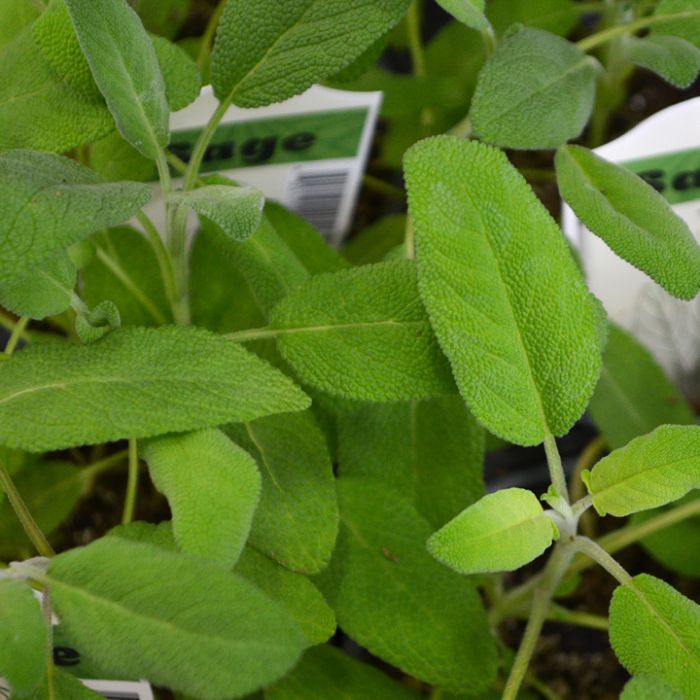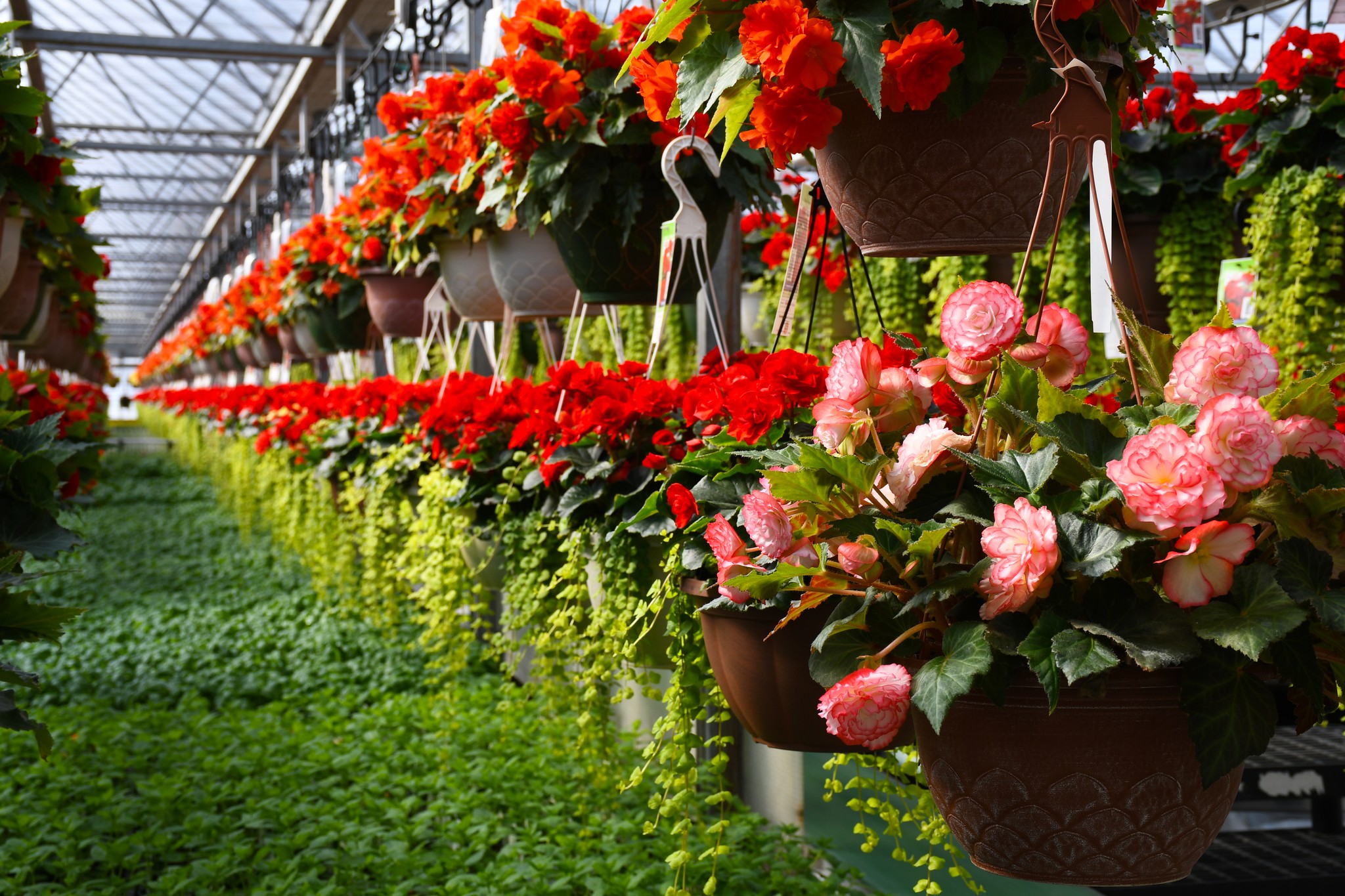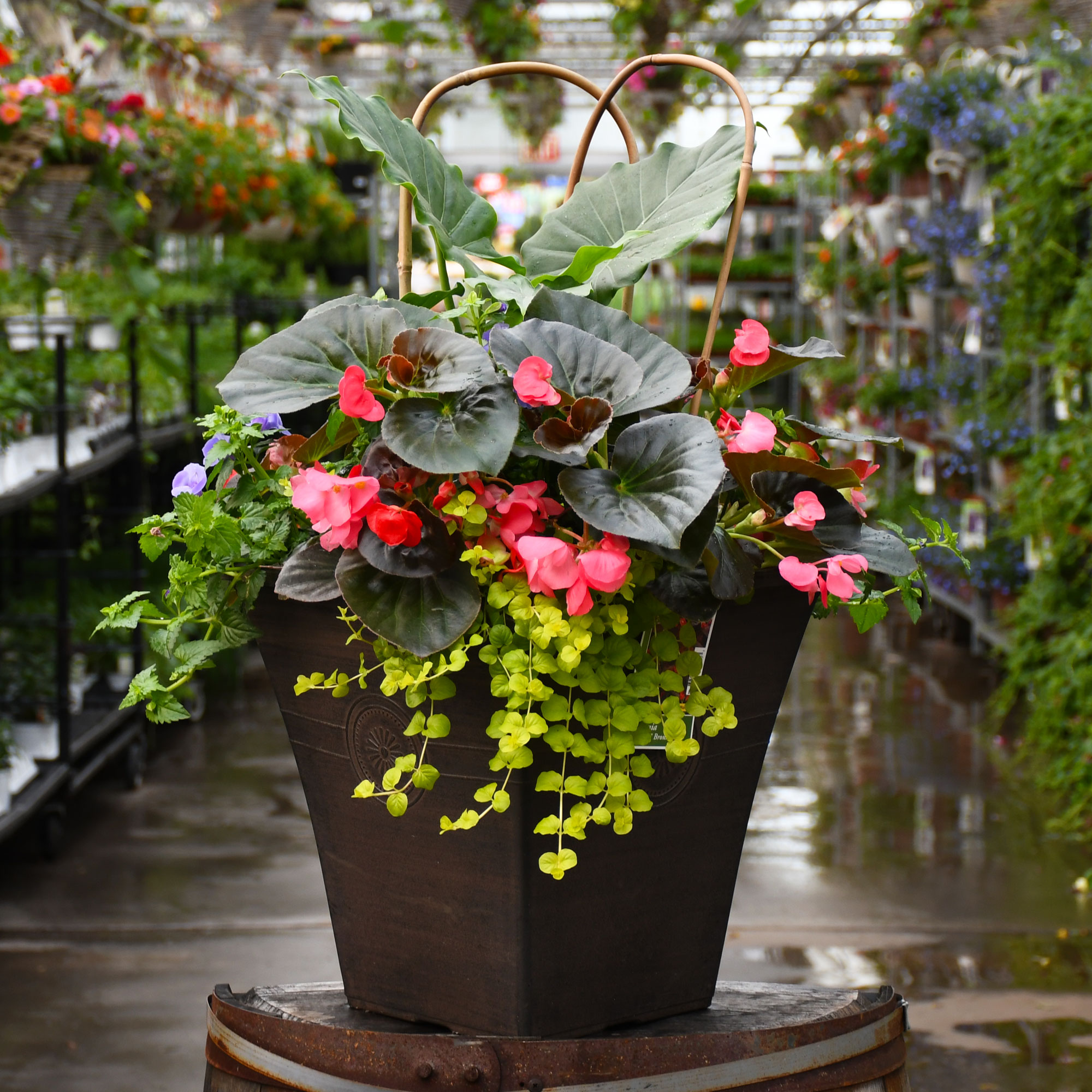Salvia, Common Sage



- Sun Preference
- Full-Sun, Part-Sun
Description
This is the familiar variety of culinary sage; gray-green leaves are strongly aromatic; best in full sun, but will tolerate light shade; whorls of lavender-blue flowers on short spikes in late spring; must be well drained
Direct from the Grower
When you see the Gerten Grown logo on our annuals, you know you're getting a fresh plant directly from our greenhouse. We've been perfecting our growing process for over four generations and pride ourselves on providing local quality and freshness to our customers. Better pricing on better quality plant material, that's Gerten Grown.
Details
Height: 26 inches
Spacing: 20 inches
Sunlight: ![]()
Hardiness Zone: 4b
Other Names: Culinary Sage, Garden Sage
Description:
This is the familiar variety of culinary sage; gray-green leaves are strongly aromatic; best in full sun, but will tolerate light shade; whorls of lavender-blue flowers on short spikes in late spring; must be well drained
Edible Qualities
Common Sage is a perennial herb that is commonly grown for its edible qualities, although it does have ornamental merits as well. The fragrant oval grayish green leaves can be harvested at any time in the season. The leaves have a savory taste and a strong fragrance.
The leaves are most often used in the following ways:
- Cooking
- Drying
- Seasoning
Features & Attributes
Common Sage has masses of beautiful racemes of fragrant lavender flowers with blue overtones rising above the foliage from late spring to early summer, which are most effective when planted in groupings. The flowers are excellent for cutting. Its attractive fragrant oval leaves are grayish green in color. As an added bonus, the foliage turns a gorgeous purple in the fall.
This is an herbaceous perennial herb with an upright spreading habit of growth. Its medium texture blends into the garden, but can always be balanced by a couple of finer or coarser plants for an effective composition. This is a relatively low maintenance plant, and can be pruned at anytime. It is a good choice for attracting bees, butterflies and hummingbirds to your yard, but is not particularly attractive to deer who tend to leave it alone in favor of tastier treats. It has no significant negative characteristics.
Aside from its primary use as an edible, Common Sage is sutiable for the following landscape applications;
- Mass Planting
- Border Edging
- General Garden Use
- Naturalizing And Woodland Gardens
- Herb Gardens
- Container Planting
Planting & Growing
Common Sage will grow to be about 24 inches tall at maturity, with a spread of 24 inches. When grown in masses or used as a bedding plant, individual plants should be spaced approximately 20 inches apart. It grows at a medium rate, and under ideal conditions can be expected to live for approximately 10 years.
This plant is quite ornamental as well as edible, and is as much at home in a landscape or flower garden as it is in a designated herb garden. It should only be grown in full sunlight. It prefers dry to average moisture levels with very well-drained soil, and will often die in standing water. It is considered to be drought-tolerant, and thus makes an ideal choice for a low-water garden or xeriscape application. It is not particular as to soil pH, but grows best in rich soils. It is somewhat tolerant of urban pollution. Consider applying a thick mulch around the root zone in winter to protect it in exposed locations or colder microclimates. This species is not originally from North America.
Common Sage is a good choice for the edible garden, but it is also well-suited for use in outdoor pots and containers. With its upright habit of growth, it is best suited for use as a 'thriller' in the 'spiller-thriller-filler' container combination; plant it near the center of the pot, surrounded by smaller plants and those that spill over the edges. It is even sizeable enough that it can be grown alone in a suitable container. Note that when growing plants in outdoor containers and baskets, they may require more frequent waterings than they would in the yard or garden. Be aware that in our climate, most plants cannot be expected to survive the winter if left in containers outdoors, and this plant is no exception. Contact our experts for more information on how to protect it over the winter months.
More Information
| Available for Pre-Order | No |
|---|---|
| Gerten Grown Plants | Gerten Grown Plants |
| Common Family Name | Herbs |
| Sun Preference | Full-Sun, Part-Sun |
| Plant Life Cycle | Annual |


